INTRAORAL INJECTIONS
Overview and Topographic Anatomy
Overview and Topographic Anatomy
GENERAL INFORMATION
Intraoral injections provide adequate pain control for various dental procedures
Many techniques have been developed
All require detailed understanding of head and neck anatomy to maximize proper administration and minimize complications
Injections should not be performed in areas of infection or inflammation
The application of topical anesthetic to the site of injection will help lessen the pain caused by the insertion of the needle
Classification
• Local injections (field blocks)
Common Blocks
Mandibular:
• Mental
• Akinosi
Maxillary:
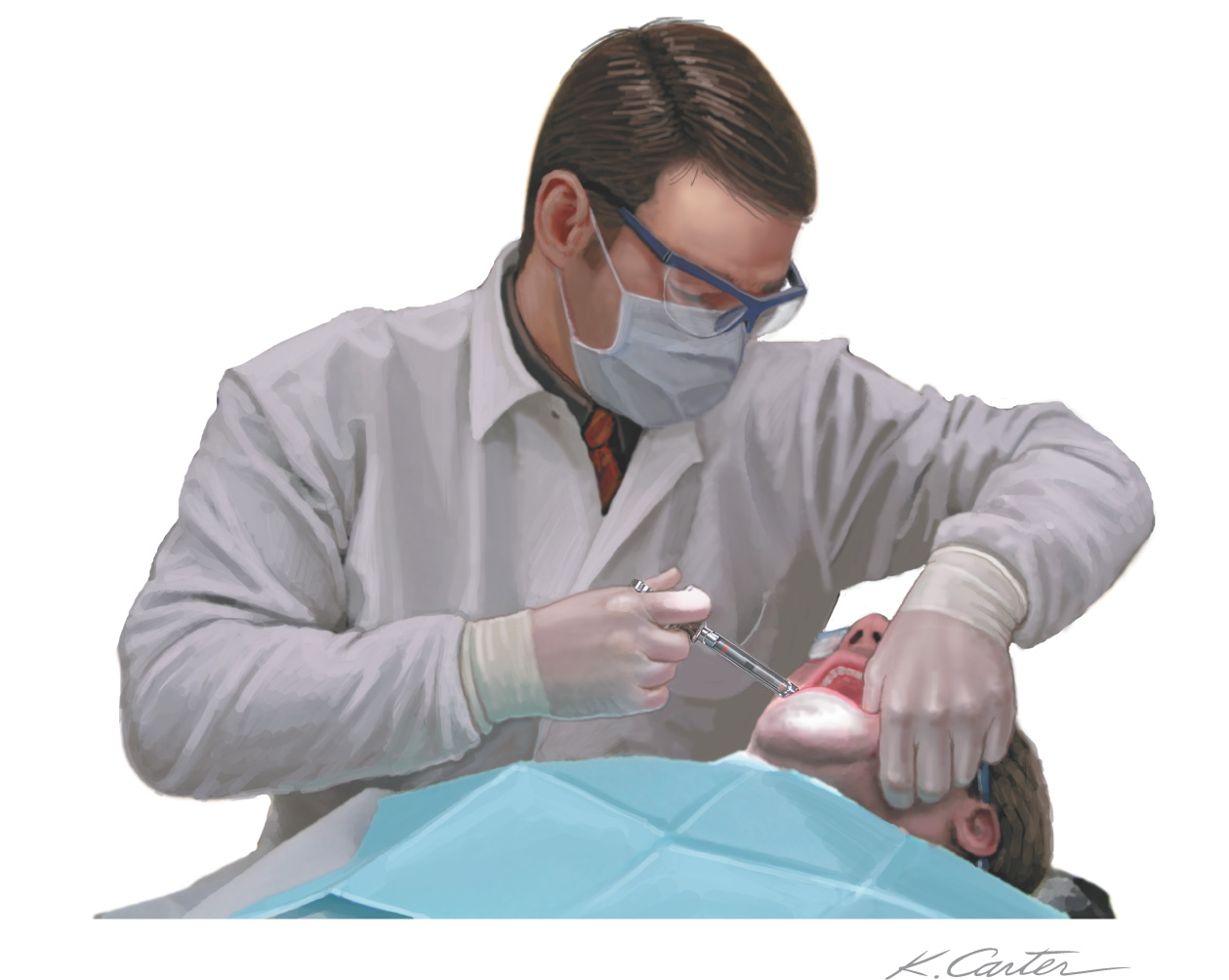
Mandibular Injections
INNERVATION AND OSTEOLOGY LANDMARKS
Mandible: General Considerations and Landmarks
The strongest and largest facial bone
Composed of 2 pieces of thick cortical bone: a lingual plate and a buccal plate
Teeth are contained in the horseshoe-shaped body
Ramus extends superiorly from the angle of the mandible
The coronoid notch is the concavity on the anterior portion of the ramus used to estimate the height of the mandibular foramen, which also is located at the height of the occlusal plane
Associated Nerves
• Inferior alveolar nerve enters the mandible at the mandibular foramen
• Lingual nerve enters the oral cavity passing against the lingual tuberosity
• Buccal nerve lies on the buccal shelf
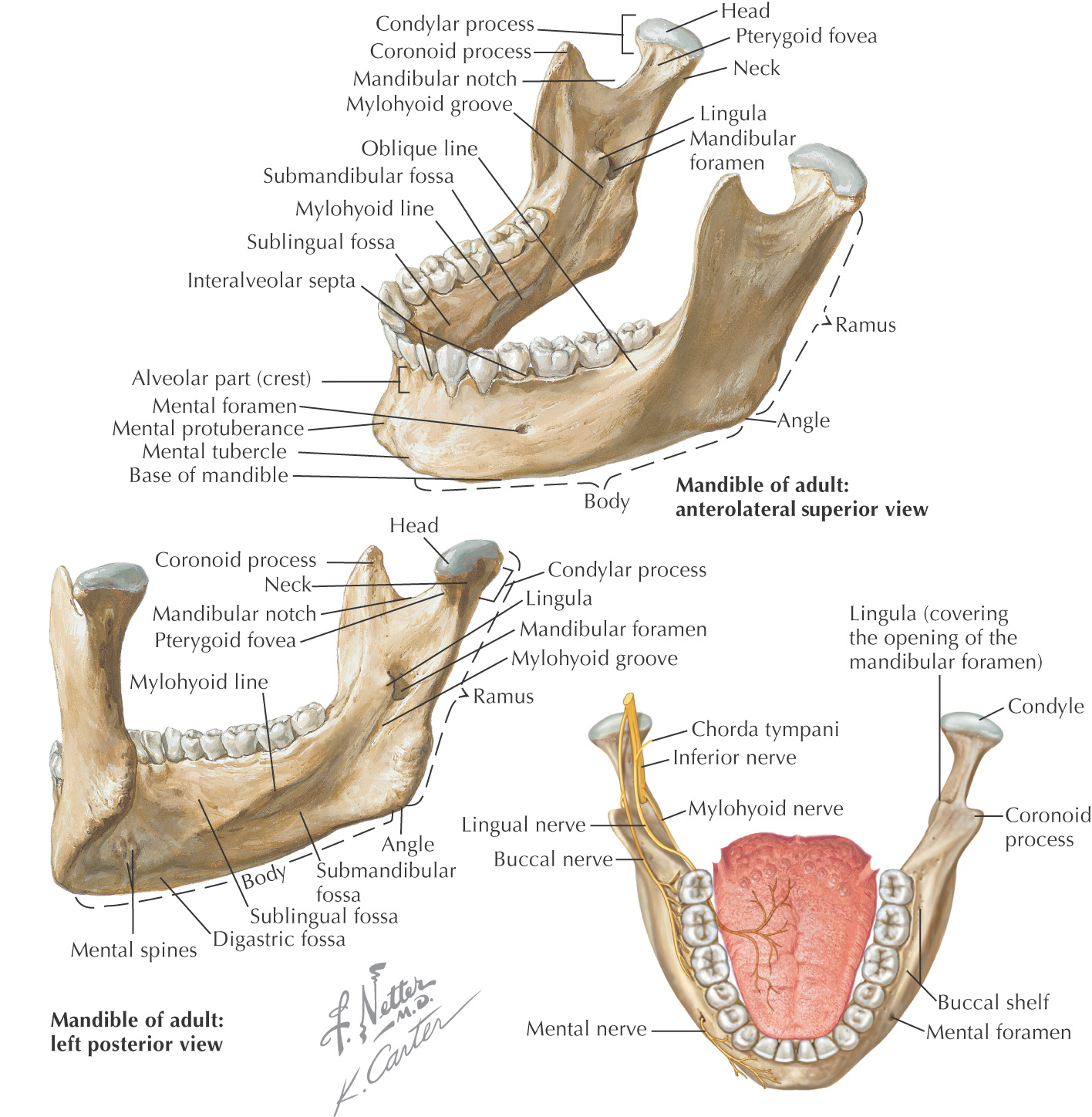
INFERIOR ALVEOLAR NERVE BLOCK
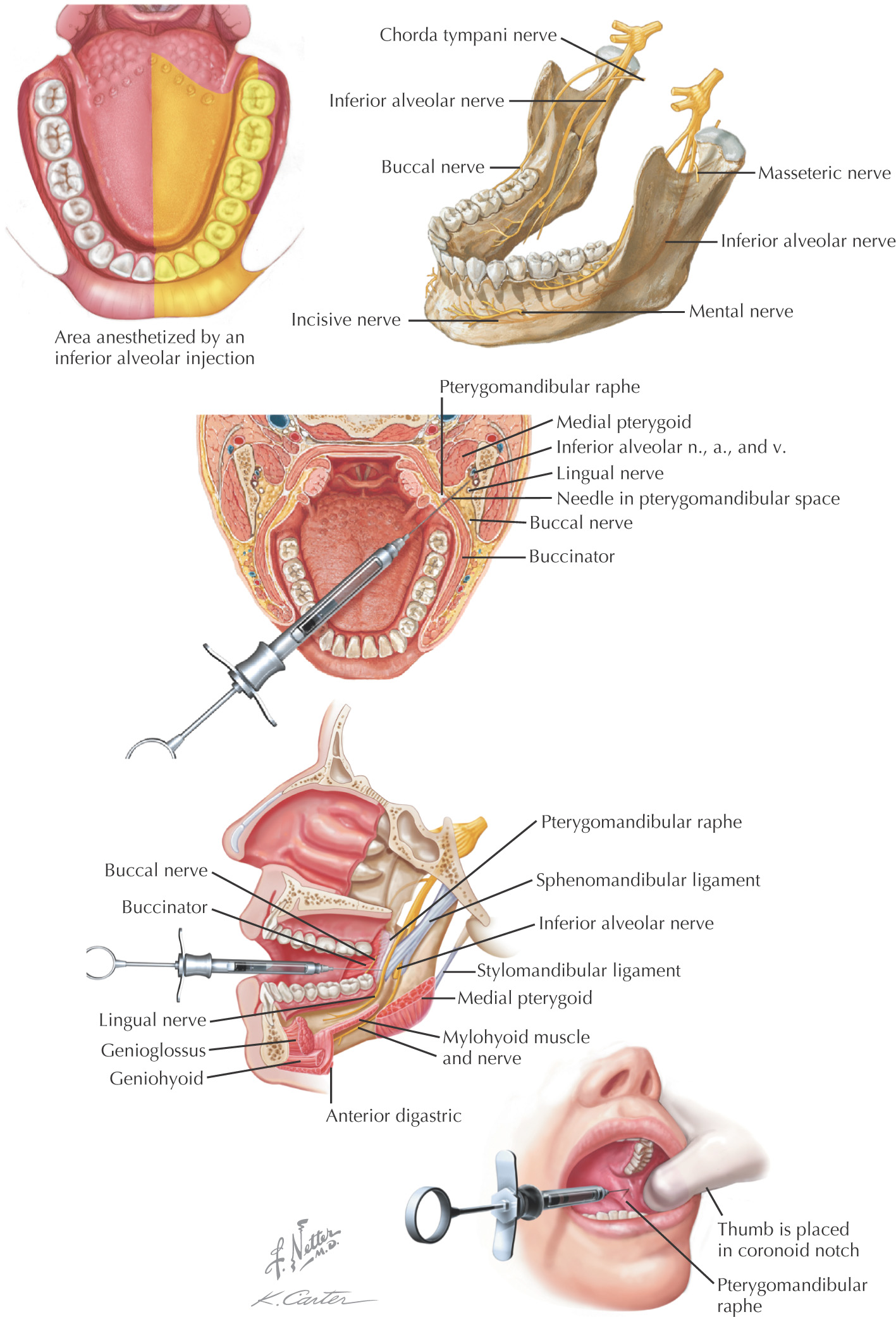
LONG BUCCAL NERVE BLOCK
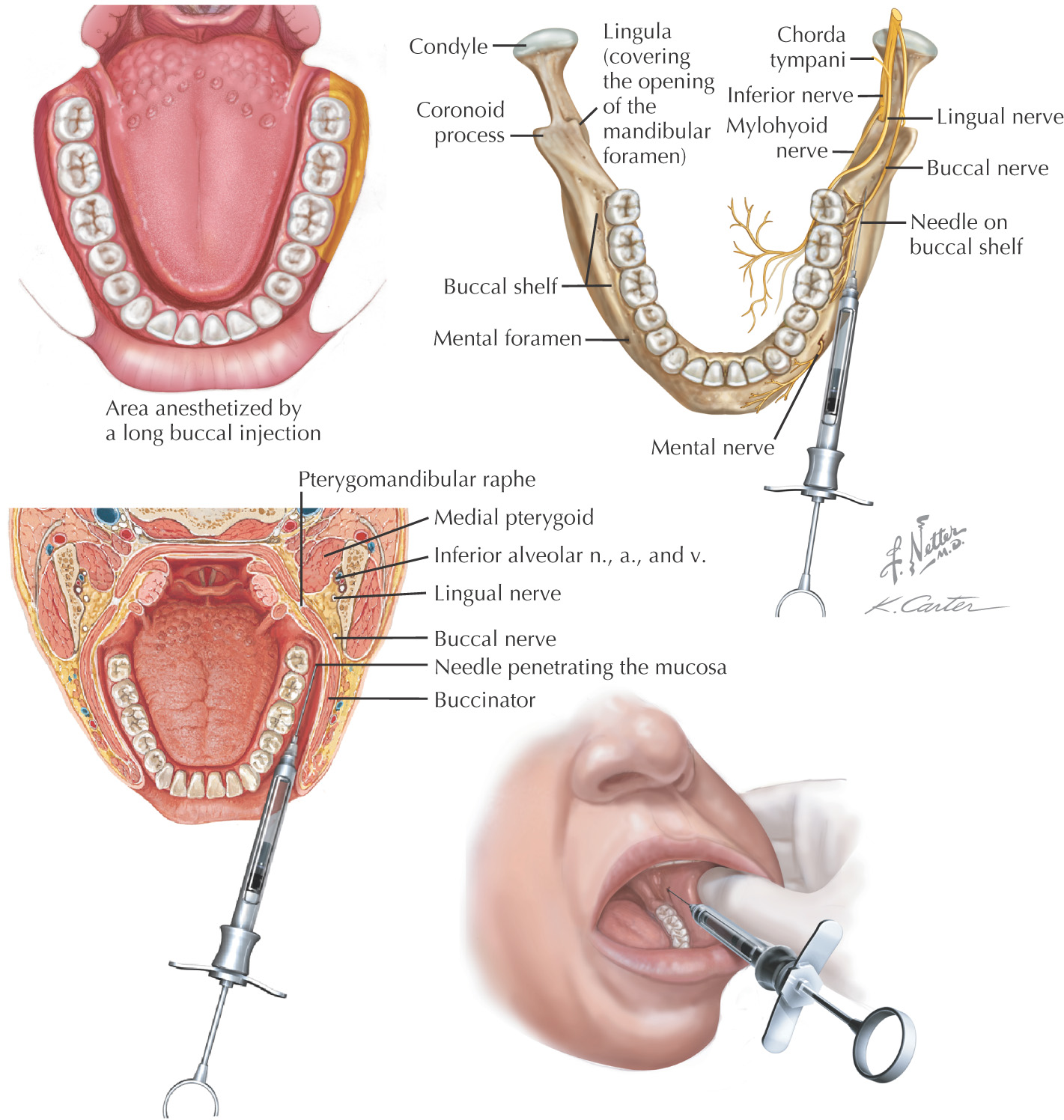
MENTAL NERVE BLOCK
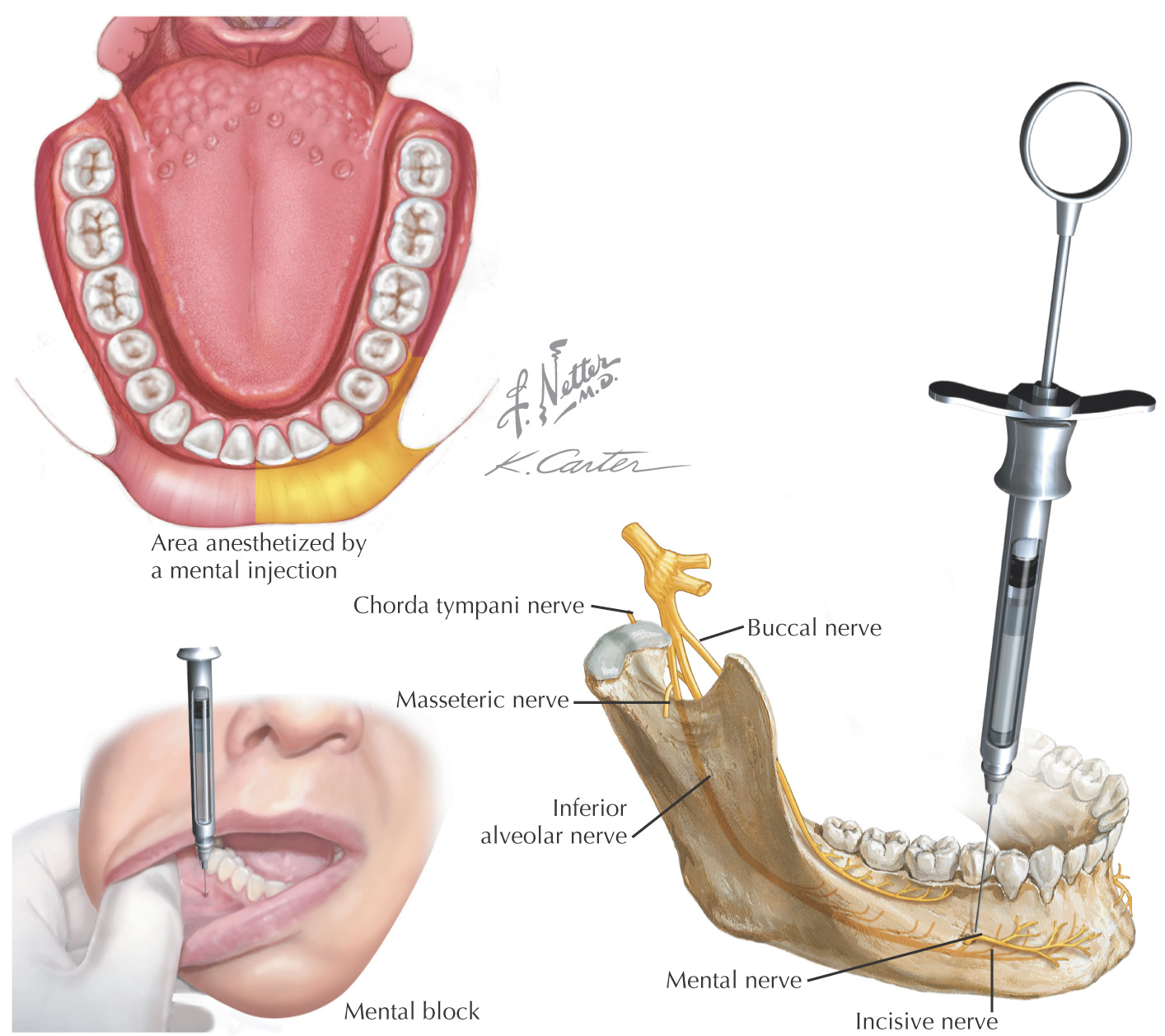
GOW-GATES BLOCK
Stay updated, free dental videos. Join our Telegram channel

VIDEdental - Online dental courses


